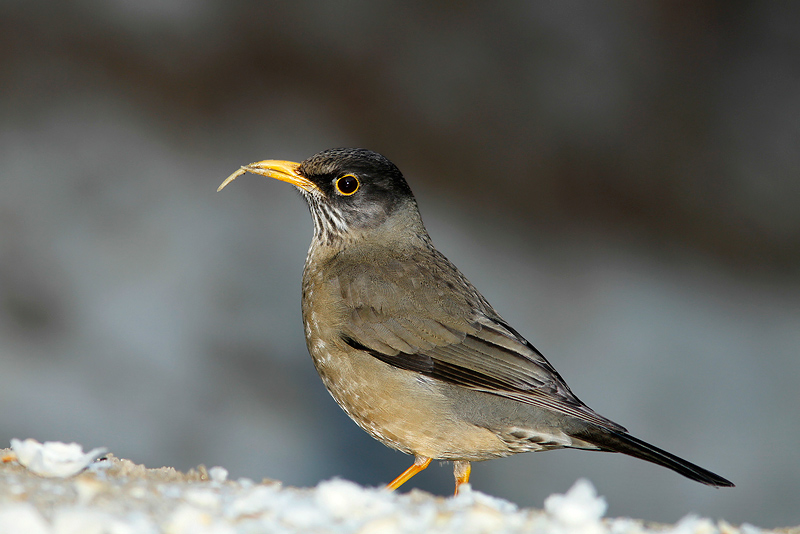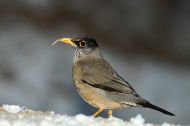Austral Thrush
Zorzal Patagónico
Turdus falklandii
Length: 260 mm. Sexes alike. Bill yellow; iris brown; eyelids yellow; upper parts of head, lores, orbital and auricular regions blackish brown; hind neck and upper back dark ochraceous brown; lower back and rump greyish brown; rectrices blackish brown. Chin and throat white streaked black; foreneck, breast and flanks brownish ochraceous; belly ochraceous; undertail coverts greyish brown with streaks and margins whitish ochraceous. Wing coverts as back; tertiary and secondary remiges blackish brown with ochraceous brown margins; primaries blackish brown. Legs yellow.
Average weight: 105g. Juveniles resemble adults but hood is not as dark; underparts are abundantly spotted blackish and the back and wing coverts show yellowish ochraceous spots. Habitat and behaviour: forest and scrubby land dwellers; very commonly observed on the ground poking at insects and earthworms as well as perched in trees and shrubs. It is usually seen darting about and stopping very still with the head tilted to one side as if attentively listening rather than looking, and then later pecking on the ground to unfailingly pull out an earthworm. The amount of fruit eaten is also considerable: in the province of Río Negro the ripening of cherries coincides with the period chicks are being raised. Thus, they do much harm to crops as they offer abundant food. The Austral Thrush sings generally perched on the topmost branches of trees. It is endowed with a melodious and pleasant voice, given very early at dawn or at dusk; there are also alarm and communication calls. The nest is built low among vegetation, basically a cup-shaped construction where up to three greyish green eggs with reddish specks are laid.
Occasionally, some specimens with exceedingly long bills can be found, due probably to a deformation produced by some fungus.
Range: the Austral Thrush is distributed throughout Patagonia. Very common in subantarctic beech forests and surroundings, it is scarcer towards the east. On the continent the race Turdus falklandii magellanicus is found, whereas on Islas Malvinas the race Turdus flaklandii falklandii, endemic to the archipelago, occurs.
Illustrated Handbook of the Birds of Patagonia
Kindless: Kovacs Family
|









